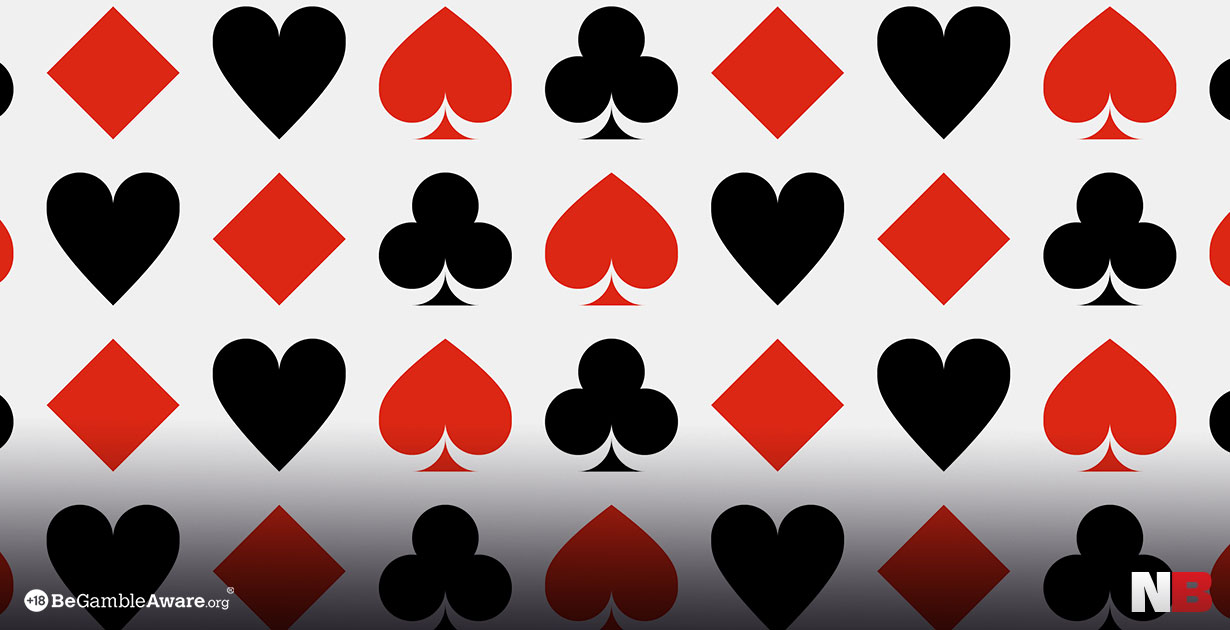
The exact origin of the classic deck of playing cards is unknown, with professional historians disagreeing on who first established the concept. What we do know from history suggests that the development of the playing card incorporates aspects from a variety of cultures from all over Europe, Africa, and Asia. In John Steinbeck’s classic novel Of Mice and Men, the dim-witted Lenny examines a card and asks why both ends look the same. His friend George has no idea, rationalising that “that’s just the way they make them”. Well, we have more of a clue than George does. Read on to learn some fascinating facts about why playing cards look the way they do.
-
Why do we use cards at all?
Historically, gamblers didn’t always use cards. In fact, the earliest known games recorded used painted tiles (similar to what is still currently used in Mahjong) or wooden blocks. It wasn’t until much later that cards began to be used. Being small and relatively inexpensive to manufacture, they were often cheaper than blank paper, and for this reason, people would often use them to carry messages.
-
What are the four suits and what do they signify?
The 4 classic suits we know best are French in origin and represent the four main pillars of the medieval economy: military, peasants, clergy, and merchants. The traditional colours of the four suits weren’t always red and black: originally, the clubs suit was green, hearts were red, diamonds were yellow, and blue was used for spades (though black is often used for spades as well). The four suits also stand for the four classical elements, with clubs being fire, hearts being water, diamonds being air, and spades being earth (though different sources disagree on which corresponds to which). Alternative suits from other countries include Coins, Cups, Swords, Wands, Acorns, Leaves, and Bells – but the four best-known ones have endured in popular culture.
-
Is there any significance to the King, Queen, and Jack?
Picture cards (the Jack, Queen, and King) are known as “court cards”. The Queen is the newest addition to this group – formerly, a knight was used instead. After the Queen was installed as the second highest-ranking card, the British, ever the difficult ones, insisted on having a “British rule” which swapped the value of the king and the queen – but only if the reigning monarch in Britain at the time happened to be a woman. This is largely ignored these days, however.
-
Why 52 cards?
- There’s a surprising amount of numerology in the makeup of a deck of cards. 52 cards aligns with 52 weeks of the year, and if you add up the numbers in a regulation deck you end up with 365 – the number of days in a standard year! Each of the 4 suits stands for a particular season: hearts for spring, clubs for summer, diamonds for autumn, and spades for winter. There are 12 “court” cards (Jack, Queen, and King) in a full deck, matching the 12 calendar months of the year, but the fact that each suit contains 13 cards corresponds with the 13 lunar months of a year. Finally, the two colours of a modern deck (red and black) stand for day and night respectively. It’s shocking how well it all fits together!
-
Are all cards the same or are they different?
Each professional card-maker designs their cards slightly differently, though the differences are often so minute you’d never notice. The most obvious distinction is the pattern on the back – each company has a different design, not unlike Scottish tartan designs. Beyond this, the designs of the four Kings are always different from one another because they’re based on real figures. The king of clubs is Alexander the Great, the king of hearts is Charlemagne, the king of spades is King David from the Bible, and the king of diamonds is Julius Caesar. Charlemagne is the only one not to have a moustache, and appears to be committing suicide by sticking his sword in his head! This is not intentional and comes from an error by English card-makers, who failed to notice that the King was actually holding an axe.
-
Do the individual cards have any meaning?
Each card in the deck – from the two of spades to the ten of diamonds – has a specific meaning in tarot. The ten of clubs, for instance, stands for authority and achievement, while the four of hearts signifies danger and ill fortune. Each numbered card has a keyword linked to it – Ace stands for Desire, Two for Union, Three for Faith, Four for Satisfaction, Five for Change, Six for Adjustments, Seven for Victory, Eight for Power, Nine for Beginnings, and Ten for Success. Much like a star sign, each individual birthday is linked to a certain card – February 29th, for example, is the nine of clubs, and December 25th is the six of hearts. What does your card signify?
-
Do casinos used specialised cards?
Most casinos will use standard decks – however, they have to be extremely careful about the standard of the decks they use. Any distinguishing feature (such as a small crumple or a frayed edge) can potentially give a huge advantage to a player who notices them, so casinos will regularly refresh their decks to avoid this. Interestingly, many casinos will sell on these imperfect decks rather than destroying or recycling them, so if you feel like buying a crimped deck you’re in luck!
-
Is there a single “best” way to shuffle a deck of cards?
There are potentially dozens of ways to shuffle a deck of cards with the objective of making it random. The overhand method is most commonly used by amateurs and is precisely what it sounds like: separating the deck in your hands and bringing different cards repeatedly to the top. A similar but far less elegant method is to simply lay all the cards face down on a flat surface and mix them around until they’re randomised. Riffle shuffling is trickier to do but looks the most elegant, and involves splitting a deck into two stacks and flicking them downwards together quickly so that the two halves mix together. Whatever way you choose, the trick is to do it for long enough that it becomes impossible for observers to track the position of any particular card – about a minute is usually sufficient.
-
What’s the deal with the Joker?
We’ve almost made it to the end of the article and haven’t yet mentioned that most notorious of cards, the Joker. The only card in the deck that is American in origin (they just couldn’t stand being left out, could they?) the Joker traces its origin to an old game enjoyed by early American settlers known as Euchre, which featured a trickster card known as the bower. Eventually, this card was incorporated into poker games and started to be referred to as the Joker. It’s now well-known enough that most decks will include one or two.
-
The strangest use of cards?
It sounds like something out of a thriller novel, but it actually happened: the Americans used cards as a weapon during the Vietnam War. Knowing that the Vietnamese were a highly superstitious people, and that the Ace of Spades was a symbol of death (this is why, even now, this card often looks different to the other three aces), they had thousands of them printed and shipped to Asia, where they were distributed widely throughout Vietnam to spook the locals. Incredibly, their ploy seemed to work.
As to why both ends look the same? Well, there’s no big mystery – it’s so that you don’t need to turn them over. Obvious, really.



